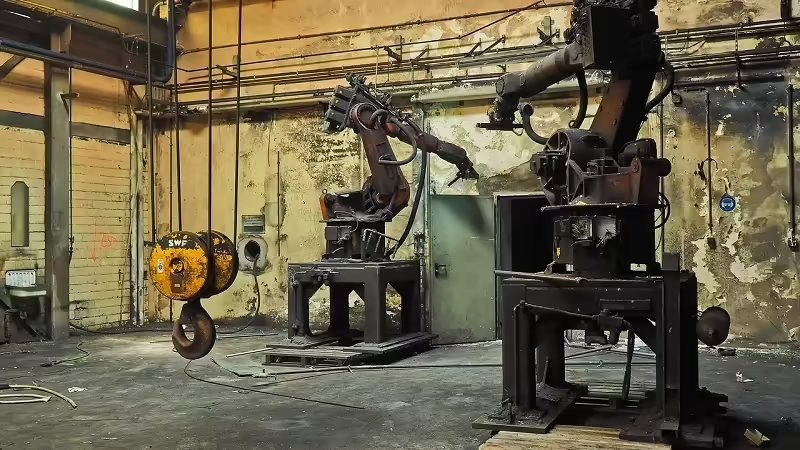
The television series “Narcos: Mexico” has captivated viewers since its launch. Set in 1980s Mexico, the series tells the story of the rise of drug trafficking and the struggle between drug cartels and law enforcement. However, beyond the exciting plot and intriguing characters, “Narcos: Mexico” also offers a fascinating perspective on the intersection between technology and power in the world of organized crime.
Throughout the series, it shows how technological advancement has had a significant impact on cartel operations and law enforcement efforts to combat them. From the use of radios and cell phones to the implementation of surveillance and wiretapping systems, technology becomes a powerful tool for both sides. Cartels use technology to coordinate their activities, communicate securely and evade detection. Law enforcement, on the other hand, seeks to take advantage of the latest technological innovations to intercept communications and gather evidence leading to the capture of criminals.
One of the highlights of the series is the way in which the evolution of technology is depicted over time. In the beginning, we see the characters relying on more rudimentary methods of communication, such as written messages and landline telephones. However, as the plot progresses, we witness the introduction of new devices and techniques, such as early cell phones and portable radios. These technological advances allow the characters to move faster, coordinate operations more effectively and stay one step ahead of the authorities.
In addition to communication, technology also plays an important role in information gathering and analysis. Throughout the series, we see how the characters use computers and database systems to store information about their operations, their competitors and their allies. This information becomes a valuable asset and provides them with a strategic advantage in their quest for power and control.
However, technology is not just a tool for cartels. Law enforcement also leverages technology to fight crime. We see how law enforcement agencies use sophisticated surveillance equipment, such as security cameras and wiretaps, to obtain information and track cartel activities. In addition, the series shows how authorities use technology to analyze vast amounts of data and follow the trail of drug money, enabling them to undermine the cartels’ financial structures.
“Narcos: Mexico” offers a fascinating glimpse into the complex relationship between technology and power in the world of drug trafficking. While technology can give cartels a significant advantage, it also provides law enforcement with tools to combat organized crime. This depiction of the intersection between technology and power underscores the importance of staying current and adapting to technological advances in security and law enforcement.
Exploring Technological Tools in ‘Narcos: Mexico’: From Radios to Encrypted Communications
In “Narcos: Mexico,” the series highlights a wide range of technological tools used by drug cartels to conduct their operations and stay one step ahead of the authorities. From radios to encrypted communications, the series shows how the cartels leverage technology to ensure their survival and success.
In the first few episodes of the series, it shows how the cartels rely on radios to communicate with each other. Portable radios become a crucial tool for coordinating operations and staying in constant contact as they move through the terrain. These devices allow them to share information in real time, give instructions to their subordinates and react quickly to any changes in the situation. However, they are also aware that radio communications are susceptible to interception, so they develop techniques to encrypt their messages and prevent authorities from tracking them.
With the advancement of technology, cartels adopt new forms of communication that are more secure and difficult to trace. In “Narcos: Mexico,” characters are shown using cell phones and encrypted communications to avoid detection. As the cartels become more sophisticated, they turn to encrypted messaging applications that allow them to communicate securely and confidentially. These applications employ advanced encryption techniques to protect the privacy of conversations and ensure that only the intended recipients have access to the information transmitted.
In addition to communications, the series also highlights the use of technology in the field of surveillance and espionage. Cartels employ security cameras, tracking devices and drones to monitor their rivals and keep track of law enforcement activities. These tools provide them with valuable information about potential threats and allow them to anticipate the movements of their enemies. In addition, cartels use databases and computer systems to store information about their operations and keep detailed records of their activities, allowing them to make informed decisions and maintain control.
However, it is not only the cartels that use technology in “Narcos: Mexico”. Law enforcement also takes advantage of technological tools to combat drug trafficking. The series shows how law enforcement agencies use communications interception techniques, such as wiretapping and online monitoring, to obtain information about cartel activities and dismantle their operations. They also use data analysis systems and intelligence software to identify patterns and connections within drug trafficking networks, allowing them to focus their efforts and target key points.
The technological hunt: how the DEA and the cartels compete in ‘Narcos: Mexico’
In “Narcos: Mexico,” the series portrays an intense technological competition between the U.S. Drug Enforcement Administration (DEA) and Mexican drug cartels. Both sides employ various strategies and technological tools to gain an advantage over the other in this “technological hunt”.
The DEA is portrayed as a highly sophisticated law enforcement agency dedicated to the fight against drug trafficking. They use a variety of technologies to gather intelligence and dismantle cartel operations. For example, they employ sophisticated surveillance systems, hidden cameras and wiretaps to obtain incriminating evidence. In addition, they use data analysis tools and intelligence software to identify patterns and connections within drug trafficking networks, enabling them to track cartel leaders and make strategic arrests.
However, the cartels are also aware of the importance of technology and are not lagging behind. The series shows how cartel leaders take steps to counter the DEA’s efforts. They use encrypted communications and encrypted messaging applications to avoid detection and interception of their communications. In addition, they take precautions to avoid tracking their movements, using counter-surveillance technology and adopting extensive security measures to protect their operations.
The series also highlights the role of hackers and computer experts in this technological competition. Both the DEA and the cartels rely on IT professionals to gain access to security systems, decrypt messages and obtain valuable information. These technology specialists become key players in each side’s strategy, either to protect their communications or to infiltrate the enemy’s systems.
The technological competition in “Narcos: Mexico” shows the importance of technology in the fight against drug trafficking and how its use can be both a weapon and a defense. Both sides are constantly evolving and adapting as new technologies and techniques emerge. The series highlights how innovation and technological know-how can make all the difference in this technological hunt.El lado oscuro de la tecnología: hackeos y vigilancia en ‘Narcos: Mexico
In “Narcos: Mexico,” the series also explores the dark side of technology, highlighting hacks and surveillance as tools used by both drug cartels and law enforcement agencies. These practices illustrate how technology can be used in invasive and manipulative ways in the pursuit of power and control.
In the series, cartels and law enforcement agencies engage in hacking operations to obtain information and dismantle each other’s operations. Hackers, whether working for the cartels or the DEA, employ their skills to infiltrate computer systems, steal valuable information and gain a strategic advantage. These hacks can include targeted cyber attacks on communications networks, security systems and databases. Cartels may seek vulnerabilities in DEA and other agency infrastructures to obtain valuable information or interfere with law enforcement operations.
In addition to hacks, the series also highlights the issue of mass surveillance. Both cartels and law enforcement agencies use advanced surveillance tools, such as security cameras, tracking devices and wiretaps, to monitor the activities of their enemies and obtain information. These invasive surveillance practices illustrate how technology can be used to invade privacy and control people’s actions. In “Narcos: Mexico”, it shows how characters are constantly watched and their movements tracked, which generates a sense of paranoia and lack of trust in their surroundings.
The series also addresses the ethical question of how acceptable it is to use technology for surveillance and hacking in the fight against drug trafficking. Questions are raised about the limits of privacy and the right to privacy in an increasingly technological world. In addition, it shows how both cartels and law enforcement agencies use these tools to obtain information that allows them to maintain power and gain an advantage over their opponents.
The role of artificial intelligence in the fight against cartels in ‘Narcos: Mexico
In “Narcos: Mexico,” the series also addresses the emerging role of artificial intelligence (AI) in the fight against drug cartels. As the plot progresses, it shows how law enforcement agencies are beginning to use AI and other advanced technologies to gather information, analyze data and make strategic decisions.
One of the most prominent applications of AI in the series is its use in identifying and tracking people. Law enforcement agencies use facial recognition systems and machine learning algorithms to identify key cartel members and follow their trail. These technologies allow authorities to conduct more efficient searches and locate criminals more quickly.
In addition, AI is also used to analyze large amounts of data and detect patterns in cartel operations. Law enforcement agencies employ advanced algorithms that can process information from different sources, such as phone records, financial transactions and social media profiles, to identify connections and power structures within criminal organizations. This gives them a more complete picture of drug trafficking networks and helps them make informed decisions about where and how to focus their efforts.
Another area where AI excels is in predicting cartel behavior. Law enforcement agencies use machine learning algorithms to analyze historical data and make predictive models about cartel movements and strategies. This allows them to anticipate their actions and take preventive measures. AI can also be used to identify high-risk geographic areas and direct resources to those locations more effectively.
However, the series also raises ethical and practical questions about the use of AI in the fight against cartels. The issue of privacy and mass surveillance is addressed, as the use of AI technologies involves collecting and analyzing large amounts of personal data. In addition, the importance of having adequate safeguards and controls in place to ensure that AI is used in an ethical and responsible manner is highlighted.







